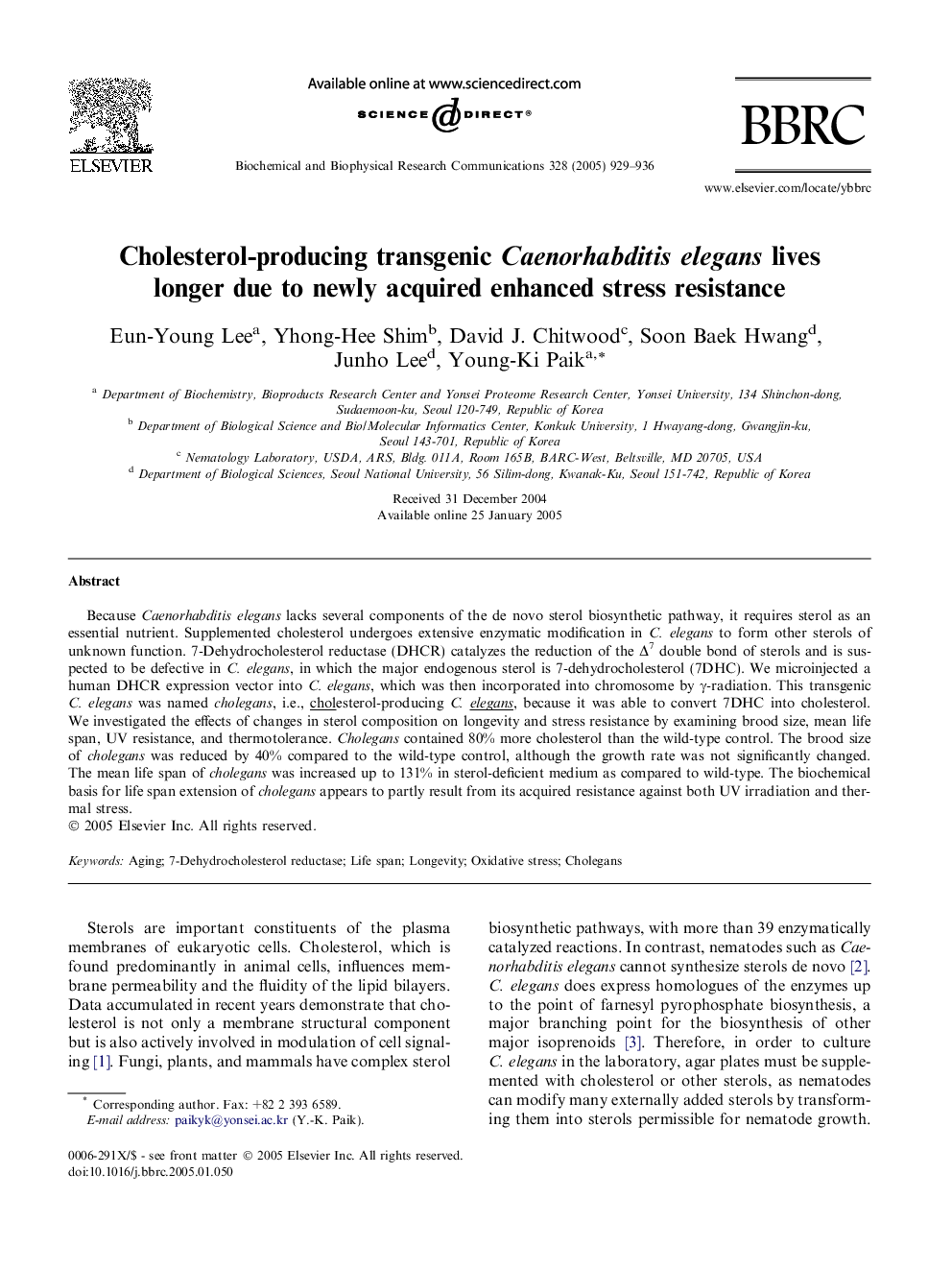| Article ID | Journal | Published Year | Pages | File Type |
|---|---|---|---|---|
| 10770582 | Biochemical and Biophysical Research Communications | 2005 | 8 Pages |
Abstract
Because Caenorhabditis elegans lacks several components of the de novo sterol biosynthetic pathway, it requires sterol as an essential nutrient. Supplemented cholesterol undergoes extensive enzymatic modification in C. elegans to form other sterols of unknown function. 7-Dehydrocholesterol reductase (DHCR) catalyzes the reduction of the Î7 double bond of sterols and is suspected to be defective in C. elegans, in which the major endogenous sterol is 7-dehydrocholesterol (7DHC). We microinjected a human DHCR expression vector into C. elegans, which was then incorporated into chromosome by γ-radiation. This transgenic C. elegans was named cholegans, i.e., cholesterol-producing C.elegans, because it was able to convert 7DHC into cholesterol. We investigated the effects of changes in sterol composition on longevity and stress resistance by examining brood size, mean life span, UV resistance, and thermotolerance. Cholegans contained 80% more cholesterol than the wild-type control. The brood size of cholegans was reduced by 40% compared to the wild-type control, although the growth rate was not significantly changed. The mean life span of cholegans was increased up to 131% in sterol-deficient medium as compared to wild-type. The biochemical basis for life span extension of cholegans appears to partly result from its acquired resistance against both UV irradiation and thermal stress.
Related Topics
Life Sciences
Biochemistry, Genetics and Molecular Biology
Biochemistry
Authors
Eun-Young Lee, Yhong-Hee Shim, David J. Chitwood, Soon Baek Hwang, Junho Lee, Young-Ki Paik,
